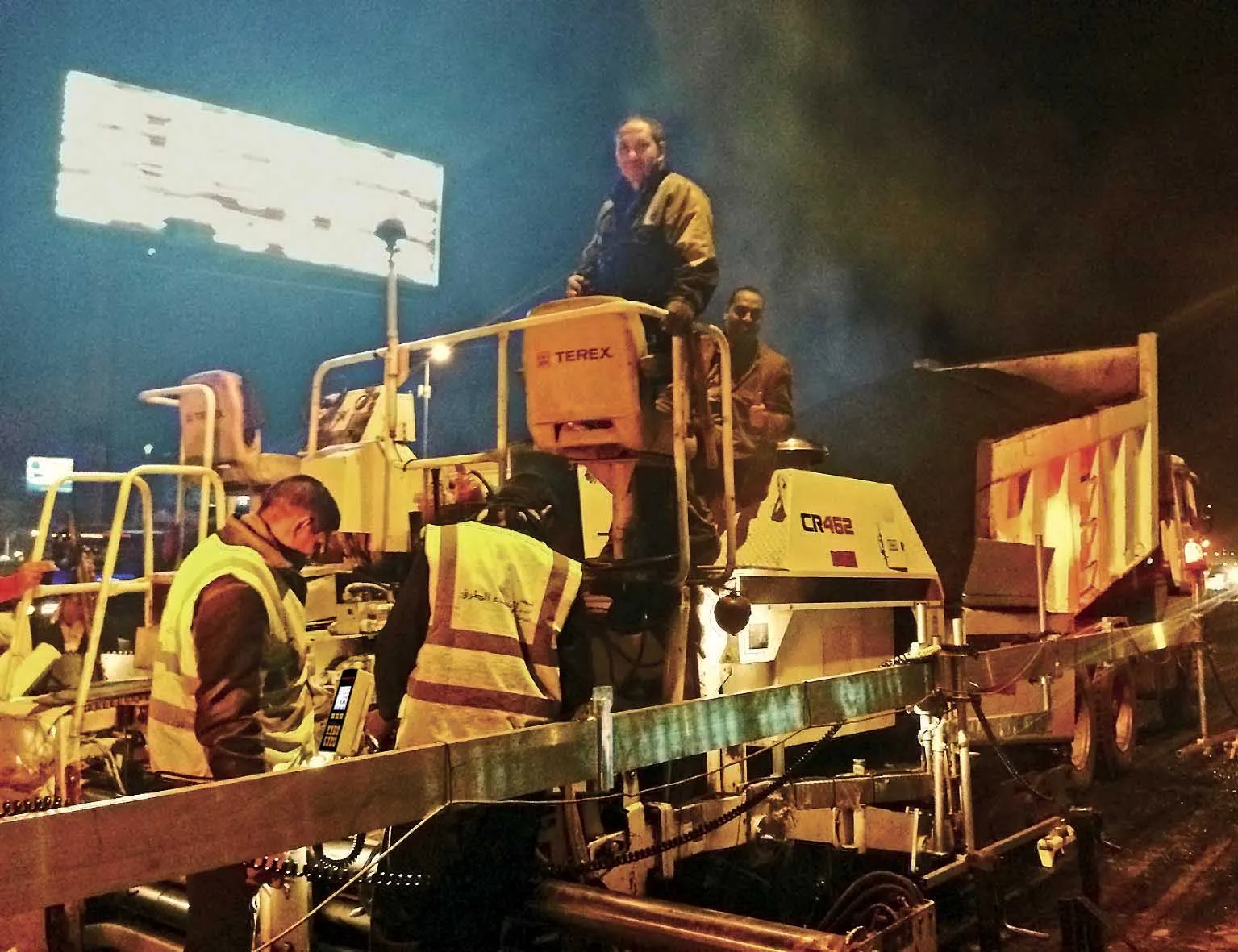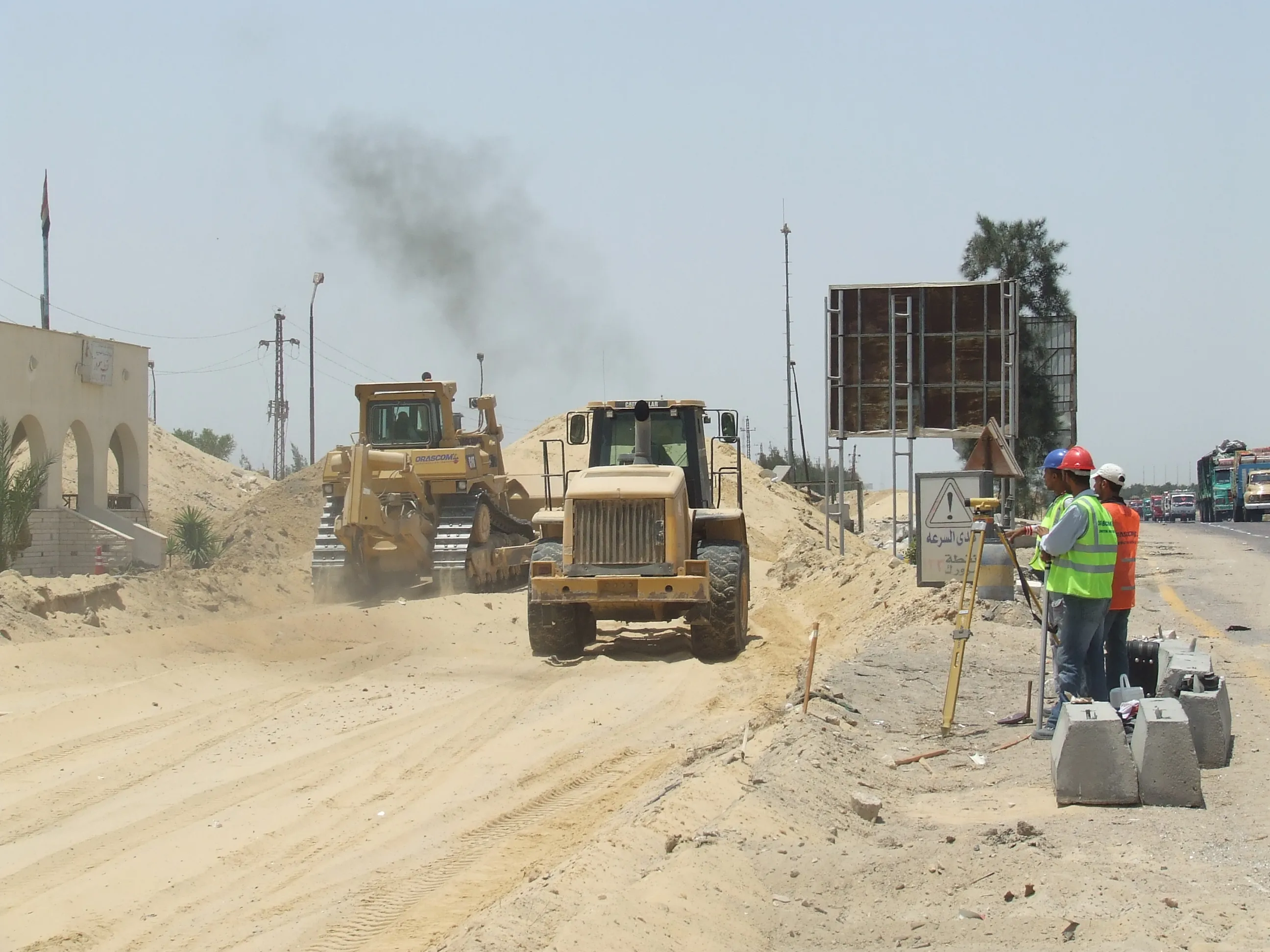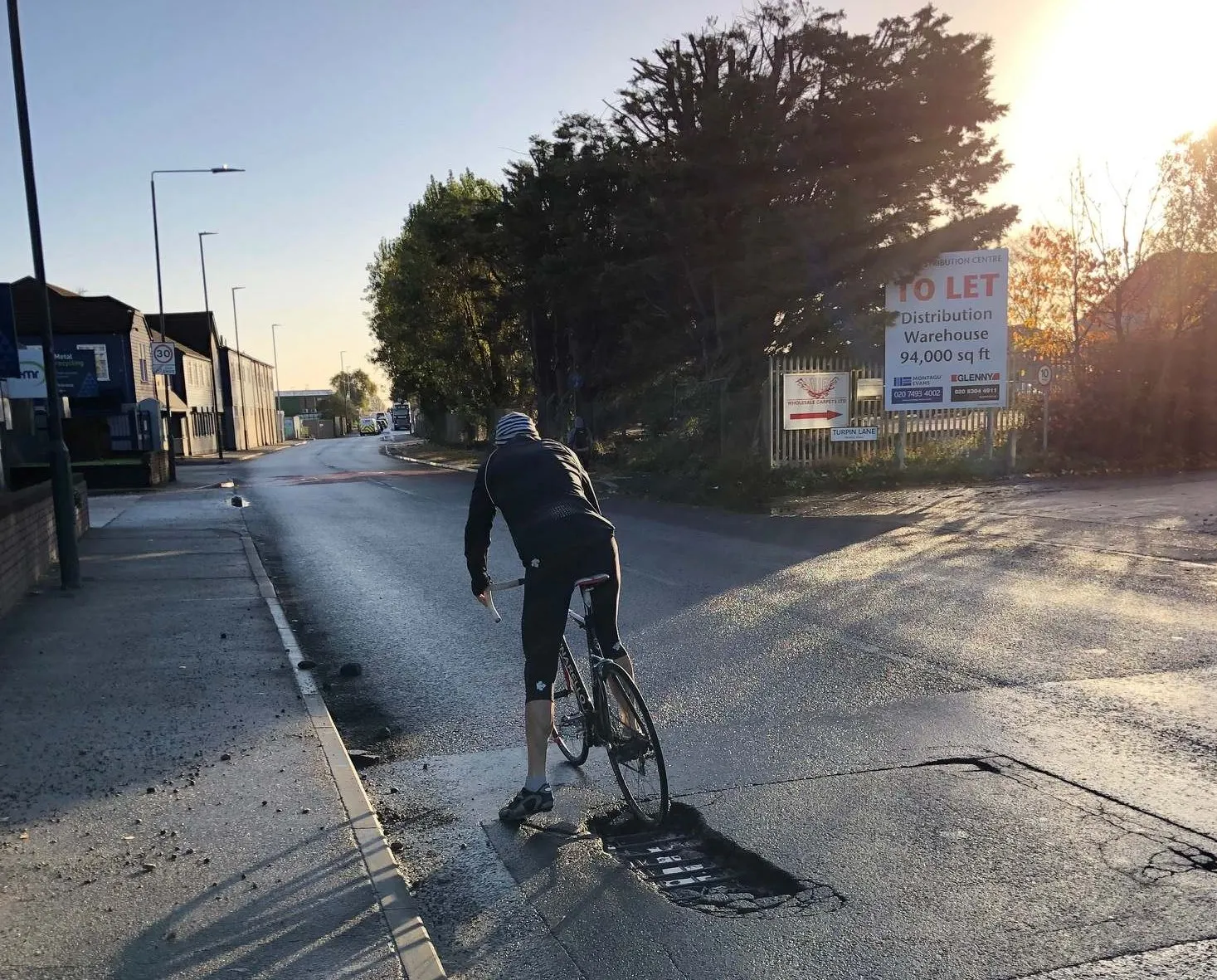Fast repair of Cairo’s busy urban highway has been achieved using paving equipment. And MOBA levelling technology played an important role in ensuring finish quality met requirements.
Cairo is Egypt’s fast-growing capital city, with an estimated population of around 20 million living in its catchment area. The city’s fast growth rate however has placed enormous demands on its infrastructure, with transportation creaking under the strain. An increasing numbers of people use the roads in and around Cairo ev
July 14, 2015
Read time: 3 mins

Fast repair of Cairo’s busy urban highway has been achieved using paving equipment. And MOBA levelling technology played an important role in ensuring that finish quality met requirements
Cairo is Egypt’s fast-growing capital city, with an estimated population of about 20 million living in its catchment area. The city’s fast growth rate, however, has placed enormous demands on its infrastructure, with transportation creaking under the strain. An increasing number of people use the roads in and around Cairo every day, resulting in ever more frequent and longer traffic jams, especially at peak times. This is also true for the city’s 100km long orbital highway, Cairo's most important traffic artery, which was built in the 1980s. In the 1990-2000 period, the number of vehicles rose from 38,000 to 100,000 per day. And this number continued to increase unchecked in the following years. Owing to repair backlogs and severe wear, the road surface had many cracks and potholes and was in dire need of repair. In spring 2015, the road surface along a 30km section of the eight-lane orbital route to the west of the city was removed and a new 50mm thick surface layer was laid.
Construction company General Nile Company for Road Construction (GNCRC) was able to optimise quality and productivity, however, using the1228 MOBA-matic levelling system with the Big Sonic-Ski on either side of its 1222 Terex CR462 paver.
The Big Sonic-Ski is a combination of up to four ultrasound sensors attached to a flexible 13m long system. The Big Sonic-Ski uses this to scan the substrate at various, widely spaced points. Each Sonic-Ski emits five beams for height measurement. The measurement values with the greatest deviations are discarded in order to rule out false measurements caused by, for example, stones lying on the reference. The sensor derives an average value from the remaining measurements. With the Big Sonic-Ski, which combines three or four sensors, all of the sensors send their measurement values to the MOBA-matic. The MOBA-matic calculates an average value so that even long sections of unevenness can be detected and smoothed out during asphalting by means of automatic adjustment of the screed.
With this solution, it was possible to avoid complete closure of the highway and to complete the repair work quickly. And because the pavers only worked during the night, the effect on the traffic was minimised so that no additional traffic jams were caused. The use of the ultrasound system that operates without a reference was the best possible solution because the milled-off surface was extremely uneven and had many milling cavities.
Without a levelling system, this reference unevenness would have been copied – the new road would then be quickly damaged again because unevenness not only reduces driving comfort, it also increases susceptibility to potholes and cracks.
The only possible alternative to the Big Sonic-Ski would have been to use a levelling system in combination with a string line as reference because the kerbstone had too many holes and was too uneven to be used as a reference. But using a string line would not only have been expensive and more time-consuming, it would have made it necessary to close the road, which in view of the traffic situation was impossible.
The contractor was supported by Egytitans Engineering, MOBA partner in Egypt, that supervised equipment of the machinery.
Cairo is Egypt’s fast-growing capital city, with an estimated population of about 20 million living in its catchment area. The city’s fast growth rate, however, has placed enormous demands on its infrastructure, with transportation creaking under the strain. An increasing number of people use the roads in and around Cairo every day, resulting in ever more frequent and longer traffic jams, especially at peak times. This is also true for the city’s 100km long orbital highway, Cairo's most important traffic artery, which was built in the 1980s. In the 1990-2000 period, the number of vehicles rose from 38,000 to 100,000 per day. And this number continued to increase unchecked in the following years. Owing to repair backlogs and severe wear, the road surface had many cracks and potholes and was in dire need of repair. In spring 2015, the road surface along a 30km section of the eight-lane orbital route to the west of the city was removed and a new 50mm thick surface layer was laid.
Construction company General Nile Company for Road Construction (GNCRC) was able to optimise quality and productivity, however, using the
The Big Sonic-Ski is a combination of up to four ultrasound sensors attached to a flexible 13m long system. The Big Sonic-Ski uses this to scan the substrate at various, widely spaced points. Each Sonic-Ski emits five beams for height measurement. The measurement values with the greatest deviations are discarded in order to rule out false measurements caused by, for example, stones lying on the reference. The sensor derives an average value from the remaining measurements. With the Big Sonic-Ski, which combines three or four sensors, all of the sensors send their measurement values to the MOBA-matic. The MOBA-matic calculates an average value so that even long sections of unevenness can be detected and smoothed out during asphalting by means of automatic adjustment of the screed.
With this solution, it was possible to avoid complete closure of the highway and to complete the repair work quickly. And because the pavers only worked during the night, the effect on the traffic was minimised so that no additional traffic jams were caused. The use of the ultrasound system that operates without a reference was the best possible solution because the milled-off surface was extremely uneven and had many milling cavities.
Without a levelling system, this reference unevenness would have been copied – the new road would then be quickly damaged again because unevenness not only reduces driving comfort, it also increases susceptibility to potholes and cracks.
The only possible alternative to the Big Sonic-Ski would have been to use a levelling system in combination with a string line as reference because the kerbstone had too many holes and was too uneven to be used as a reference. But using a string line would not only have been expensive and more time-consuming, it would have made it necessary to close the road, which in view of the traffic situation was impossible.
The contractor was supported by Egytitans Engineering, MOBA partner in Egypt, that supervised equipment of the machinery.









